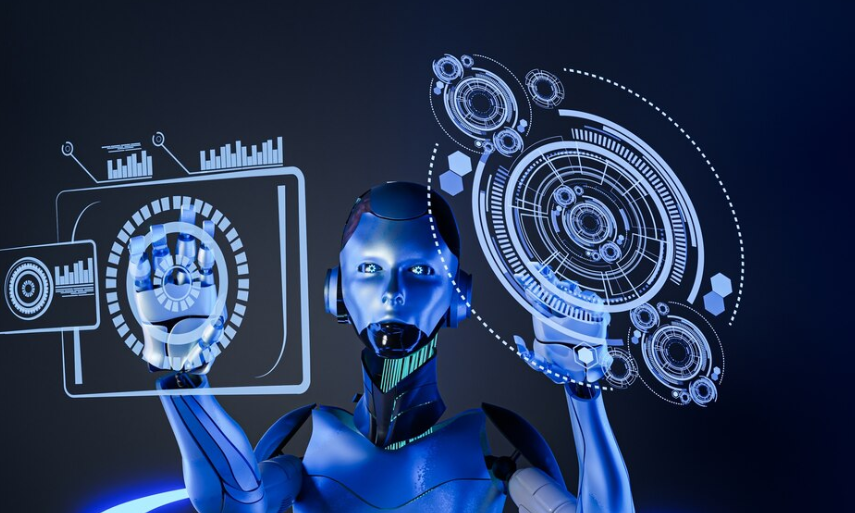À medida que as tecnologias digitais continuam a evoluir, a cibersegurança tornou-se uma preocupação crítica para indivíduos, empresas e governos.
A crescente dependência da Internet, da computação em nuvem e da inteligência artificial (IA) expôs dados confidenciais a uma ampla gama de ameaças cibernéticas.
Este conteúdo explora as ameaças mais prementes à cibersegurança e as soluções necessárias para proteger os ativos digitais na era moderna.
O cenário crescente de ameaças cibernéticas
Os cibercriminosos estão se tornando mais sofisticados, utilizando técnicas avançadas para explorar vulnerabilidades. Algumas das ameaças mais comuns à cibersegurança incluem:
Ataques de ransomware
Ransomware é um tipo de malware que criptografa os dados da vítima e exige pagamento pela sua liberação. Ataques de alto perfil atingiram hospitais, instituições governamentais e grandes corporações, causando danos financeiros e operacionais significativos.
Phishing e Engenharia Social
Os ataques de phishing enganam os indivíduos para que revelem informações confidenciais, como senhas e detalhes financeiros, fazendo-se passar por entidades legítimas. As técnicas de engenharia social manipulam os usuários para cometerem erros de segurança, muitas vezes por meio de e-mails, telefonemas ou sites falsos enganosos.
Violações de dados e roubo de identidade
Os cibercriminosos frequentemente têm como alvo empresas que armazenam grandes quantidades de dados de usuários, incluindo informações de cartão de crédito, detalhes de identificação pessoal e credenciais de login. Uma vez roubados, esses dados podem ser vendidos na dark web ou usados para atividades fraudulentas.
Ataques distribuídos de negação de serviço (DDoS)
Os ataques DDoS inundam um site ou rede com enormes quantidades de tráfego, sobrecarregando seus servidores e fazendo com que ele fique offline. Esses ataques perturbam empresas, serviços financeiros e operações governamentais.
Explorações de dia zero
Uma exploração de dia zero visa vulnerabilidades de software desconhecidas antes que os desenvolvedores possam corrigi-las. Essas explorações são particularmente perigosas porque podem ser usadas para infiltrar sistemas sem serem detectadas.
Ameaças cibernéticas alimentadas por IA
Os cibercriminosos estão usando cada vez mais a IA para lançar ataques mais sofisticados, como hackers automatizados, golpes deepfake e campanhas de phishing baseadas em IA que personalizam os ataques com base no comportamento do usuário.
Soluções e melhores práticas de cibersegurança
À medida que as ameaças cibernéticas se tornam mais avançadas, as organizações e os indivíduos devem adotar estratégias robustas de cibersegurança para mitigar os riscos. Aqui estão algumas soluções importantes:
Senhas fortes e autenticação multifator (MFA)
O uso de senhas complexas e a ativação da MFA aumentam significativamente a segurança da conta. A MFA adiciona uma camada extra de proteção ao exigir uma segunda forma de verificação, como uma leitura de impressão digital ou um código temporário enviado a um dispositivo móvel.
Atualizações regulares de software e gerenciamento de patches
Manter software, sistemas operacionais e aplicativos atualizados é crucial para lidar com vulnerabilidades de segurança. Atualizações automáticas e ferramentas de gerenciamento de patches podem auxiliar as organizações a permanecerem protegidas contra ameaças conhecidas.
Soluções de segurança e antivírus de endpoint
A instalação de soluções confiáveis de antivírus e segurança de endpoint ajuda a detectar e bloquear malware antes que ele possa causar danos. Os sistemas avançados de detecção e resposta de endpoint (EDR) fornecem monitoramento em tempo real para identificar atividades suspeitas.
Treinamento de funcionários e conscientização sobre cibersegurança
O erro humano continua a ser um dos maiores riscos de cibersegurança. Sessões regulares de treinamento sobre reconhecimento de tentativas de phishing, práticas seguras de senhas e medidas de proteção de dados podem ajudar a prevenir violações.
Segurança de Rede e Firewalls
Firewalls, sistemas de detecção de intrusões (IDS) e sistemas de prevenção de intrusões (IPS) atuam como a primeira linha de defesa contra ataques cibernéticos, monitorando e filtrando o tráfego de rede. A implementação de redes privadas virtuais (VPNs) também pode aumentar a segurança dos trabalhadores remotos.
Modelo de segurança Zero Trust
O Confiança Zero O modelo pressupõe que nenhum usuário ou dispositivo deve ser confiável por padrão, mesmo em uma rede. As organizações que implementam Zero Trust exigem verificação contínua de usuários e dispositivos antes de conceder acesso a dados confidenciais.
IA e aprendizado de máquina em cibersegurança
Assim como a IA é usada pelos cibercriminosos, ela também pode ser aproveitada para defesa. As ferramentas de cibersegurança baseadas em IA podem detectar anomalias, prever ameaças e automatizar respostas a ataques em tempo real.
Blockchain para transações seguras
A tecnologia Blockchain aumenta a segurança, fornecendo descentralizado e à prova de adulteração registros de transações. Isto é particularmente útil para proteger transações financeiras, identidades digitais e gestão da cadeia de abastecimento.
O papel dos governos e das organizações na cibersegurança
Os governos e os organismos reguladores desempenham um papel crucial no estabelecimento de quadros de cibersegurança. As principais iniciativas incluem:
- Leis de proteção de dados: regulamentos como o Regulamento Geral de Proteção de Dados (RGPD) e o Lei de Privacidade do Consumidor da Califórnia (CCPA) garantir que as empresas tratem os dados pessoais de forma responsável;
- Estratégias nacionais de cibersegurança: muitos países implementaram políticas de cibersegurança para proteger infraestruturas críticas, sistemas financeiros e dados dos cidadãos;
- Parcerias público-privadas: a colaboração entre governos, empresas de tecnologia e empresas de cibersegurança é essencial para se manter à frente das ameaças emergentes.
O futuro da cibersegurança
O cenário da cibersegurança está em constante evolução e os avanços futuros se concentrarão em:
- Criptografia resistente a quantum: à medida que a computação quântica avança, os métodos tradicionais de criptografia podem se tornar obsoletos. Os pesquisadores estão desenvolvendo algoritmos resistentes a quantum para proteger informações confidenciais;
- Detecção automatizada de ameaças: a automação baseada em IA desempenhará um papel mais importante na detecção e neutralização de ameaças cibernéticas em tempo real;
- Cibersegurança no metaverso: à medida que os mundos virtuais crescem, surgirão novos desafios de segurança, incluindo a proteção da identidade digital e a segurança dos ativos virtuais;
- Aprimoramentos de segurança de IoT: com milhares de milhões de dispositivos da Internet das Coisas (IoT) ligados em todo o mundo, garantir a sua segurança será fundamental para prevenir ataques cibernéticos em grande escala.
Conclusão
Na era digital, a cibersegurança não é mais opcional — é uma necessidade. À medida que as ameaças cibernéticas continuam a evoluir, os indivíduos e as organizações devem adotar medidas proativas para proteger os seus dados e sistemas.
Desde a implementação de práticas de segurança sólidas até ao aproveitamento da IA e da blockchain, o futuro da cibersegurança depende da inovação e vigilância contínuas. Ao permanecermos informados e preparados, podemos construir um mundo digital mais seguro para todos.


